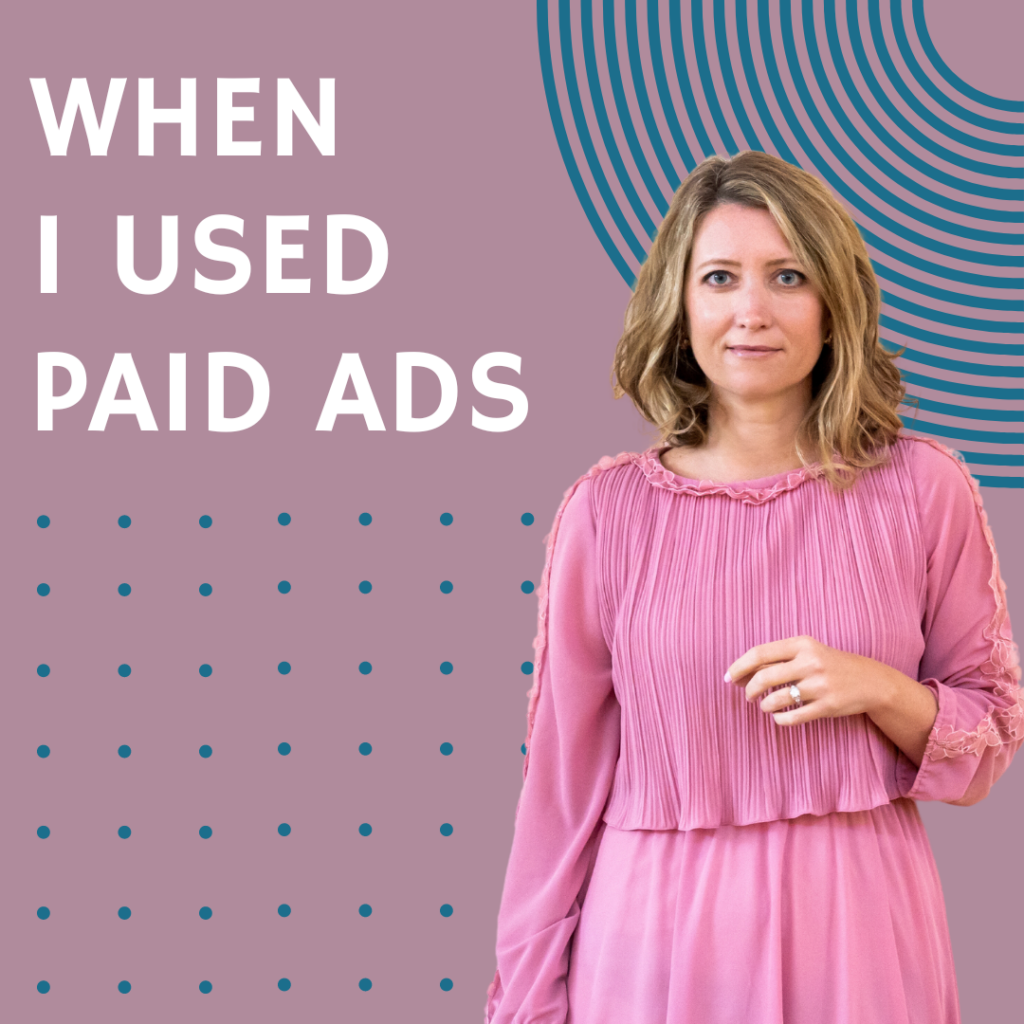When I Used Paid Ads
For the very longest time, I thought paid ads were for people who hate money. Business is good, I thought, I don’t need to PAY people to get me more clients.
But.
I’m a data nerd. I love to run an experiment and see what happens.
So now here we are, on the other side of a lengthy ad campaign, analyzing the results.
Up to this point, my main marketing strategy has been organic. Meaning, if people find me, it’s through something I made on my own, like a blog post, a YouTube video, or even word of mouth.
Organic marketing is a PUSH.
You push your content out there and hope to the heavens that (step 1) it’ll land with the right people and (step 2) they’ll want more from you.
Paid advertising is a PULL.
You identify your target audience and put your ads right in their faces, actively pulling them into your orbit.
Like Paula Abdul and MC Skat Kat, these two opposite forces can work magic together.
If you take a strategic approach.
While there’s no one right way to market, Liz at LLY Communications is a genius at figuring out a strategy specific to each client that produces the biggest bang for your buck.
Early on in our work together we noticed something huge:
When we posted ads for one of my online courses, it didn’t get much engagement. Few people clicked, fewer people signed up. Each signup, therefore, was pricey.
When we switched the ad strategy to focus on something free, like one of my blog posts, engagement went up. A lot.
Which makes our ad strategy relatively inexpensive, but puts more emphasis on that potential client’s post-ad-click journey.
This means (for us, anyway, at this particular moment in time) the real work comes in taking people from reading a free blog post to enrolling an online course. Seems like a situation with high creep factor. Shall we blast a pop up over the blog post? Ew, so annoying.
Strong organic content is the magnet that keeps people in my orbit.
Paid ads are like your billboard and organic content is like your famous brick chicken recipe that keeps everyone coming back.
Liz could tell my organic content was strong because of:
- The size of my clean email list
- The open rates for my emails
- How many of yall write me back (this is my favorite part)
- Website hits on my blog posts
- The sheer number of blog posts I’ve written over time
Do you see indicators in that list that reflect both quantity and quality? That’s a strong organic content game, Honey.
Once I had pulled people into my orbit through the ad, I was able to keep them there, exploring my website, reading other organic content, signing up for my newsletter, getting curious about my online courses.
Companies who don’t have strong organic content have to sink a ton more in paid advertising because they need to get way more eyeballs since they’ll convert a far smaller percent into actual customers due to no magnet. Make sense?
I can really only speak for my own experience here (though this likely applies to you, too): Investing the time and energy into organic content is critical.
Hold that free class.
Start that newsletter.
Fire up that podcast mic.
Launch that YouTube channel.
PUSH.
It takes a while to build up the breadth and depth of organic content that acts as your track record of being stunningly helpful. This is absolutely about playing the long game.
One day, when you’re ready to PULL, you’ll have magnets in place that prove to your potential customers that you’re not just some flashy wannabe influencer. Your concrete organic examples will show your value and make people wanna stick around. That’s how people will know you’re the real deal.

